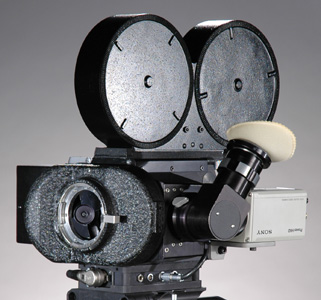
As a filmmaker, I'm a fan of moving the camera. Nothing is better than a beautifully executed dolly move, or a magnificent tracking shot. There is just a certain grace to a well-done camera move that can't be replicated by plopping a camera down on a tripod and pressing record. Of course, what is the point of camera movement other than just to add a more professional flair to the end product?
A well-executed camera move must be timed at the right moment within a film. Too much camera movement can make the film feel cluttered, and too frantic. Too little camera movement can make a film feel stagnant and boring. What is ideal is to hit it right in the middle. There are certain moments in every film, where the shots need to be kept simple, put it on a tripod and record instead of rolling out the crane and going for this grand shot that looks as if your trying to make the next Lord of the Rings. But when is it right to do a camera move then?
Typically, I always find a camera move a good way to come into a scene; start it off moving the camera, in particular to set up the setting in order to give the scope of the place in which this scene is taking place. You see this a lot in movies, a very recent example is Star Trek where almost every establishing shot had some sort of movement involved in order to let you know the environment.
Another good time to execute a camera move is to draw attention to something that you want the audience to see. While this can be done with a bunch of individual shots, nothing is better than when you use a dolly and close in upon the fingers drumming on the top of the restaurant table while the guy is waiting for his blind date.
Of course, my favorite form of camera movement is to use it to create a psychological effect in the mind of your audience. When you're at a moment of high intensity, circle around the character to create chaos, or when at a real emotional moment, dolly-in to your actor's face in order to heighten the emotional response.
As well, camera movements can be advantageous. Very often I try to get a scene in as few shots as possible because I don't want the actor's takes to be interrupted, by doing camera movement in a scene of dialogue, it allows you to stay on that same shot perhaps for the entire scene, but it never feels boring or static cause the camera is in constant motion. It is also in these cases where the camera movement can help create a larger scale for your film than you previously had. It is very easy to make the world of your film feel like a two-dimensional realm of being, but when using the camera to take the audience further into the world, you create a whole other dimension and thus make the world feel real, whether you are making E.T. or Taxi Driver.
Camera movement is often overlooked in cinema, but imagine seeing any real fantastic movie without the tracking shot following the character as he jogs through Bedford Falls at the end of the movie, or the impactful dolly shots when the alien says goodbye to his best friend, a ten-year-old boy. I think it is safe to say that moving the camera isn't there simply to add flair, but to create the third-dimension that makes a movie a classic of cinema.
I'm supposed to be studying instead of wasting my time on the internet reading articles that have nothing to do with the final I'm taking in a few hours. Anyway, I enjoyed this particular blogging of yours.
ReplyDelete